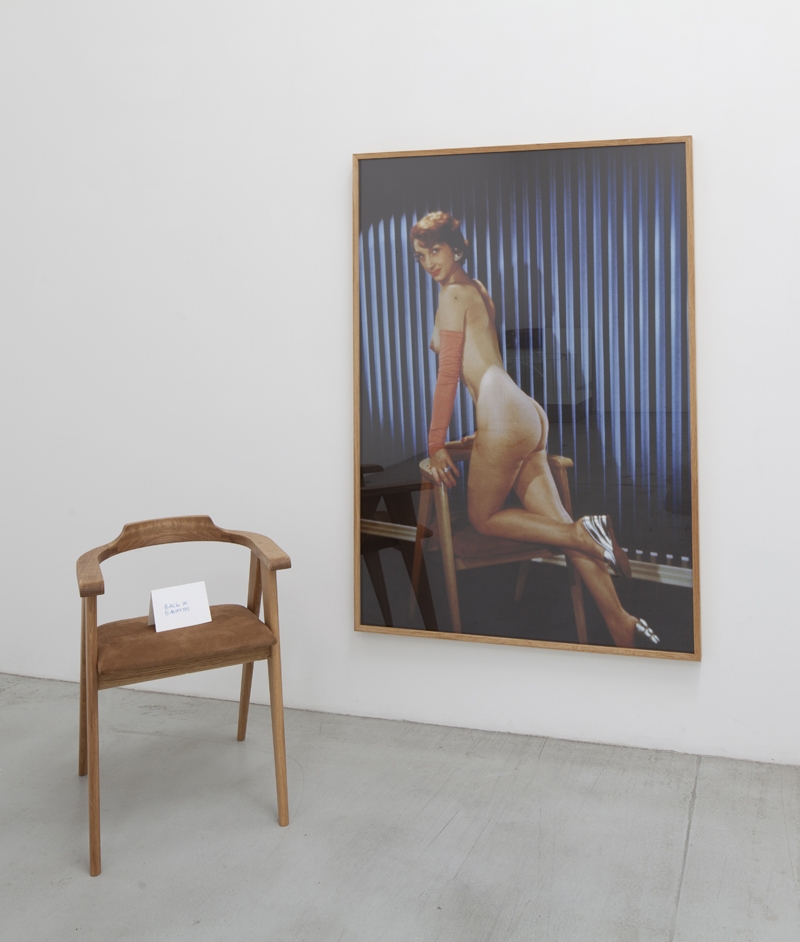“Any highlights?” said ArtReview casually to the Chinese art critic it saw sauntering around the fair. “Well, right now I’m going to meet my heroes,” the critic said excitedly. ArtReview got its pen to the ready just as it had seen all the market correspondents from the Art Newspaper do earlier during the day (ArtReview has been studying their ‘tactics’ ever since its editor had barked ‘And get some bloody quotes – those are the new artworld facts!’ at it when reminding it that it had promised to do a fair report during a moment of drunken lunacy the previous night), and nodded in a way that seemed idiotic but was carefully calculated to make the critic dish the dirt. The critic took the bait. “Yeah, Mission is just down there and there isn’t a queue,” he blurted out, “what they do with Chinese is amazing”. ArtReview nodded sagely, and offered the kind of knowing “Of course” that indicates that the information is so obvious as to have been barely worth stating. Then, once the critic was safely on his way, it discretely consulted its fair map for the location of this gallery it had never heard of before, but was clearly a big player on the Asian scene. (A bit embarrassing that, given that ArtReview is launching its sister magazine ArtReview: Asia in two weeks’ time at Art Basel Hong Kong.) Bafflingly, the gallery didn’t show up on the exhibitors’ list, and it was only when ArtReview flipped over the page that the true identity of this artworld titan was revealed: Mission foods offers a blend of Chinese and American cuisine. ArtReview’s no longer so convinced about this quotes business.
Still, it meant that Gabriel Kuri’s Untitled polling table (consumed breakfast) (2013) – a grey table divided into individual polling booths, each of which features a more-or-less consumed cooked breakfast (made of resin and latex, featuring the ingredients of a typical British/American pig out) – at Esther Schipper’s stand took on a whole new significance in terms of the blend of art, consumption and gastronomy at fairs like this. And the obscured politics of access and entitlement on which the whole fair tent rests.
Jonathan Horowitz’s Pillow Talk (2002) at the Gavin Brown’s enterprise booth – 96 pairs of inkjet prints of pillowcases featuring the first names of famous couples in a font appropriate to their character, starting with Adam and Eve and ending with Mary and [blank]. Between the biblical bookends, the work runs the gamut of couplings from Star Wars’ R2-D2 and C-3PO, Bill and Hillary (Clinton), Jekyll and Hyde, Matthew [Barney] and Björk, Left and Right, etc. While the overall experience is something like a pub quiz (do you know the last names or cultural references that the first names guide you towards?), it’s also a neat mirror of the Pavlovian way we’re trained to engage with works of art in the context of accepted wisdom about culture and celebrity. Who’s to say Bill and Hillary aren’t just a couple of people Horowitz knows from his local grocery store?
Just as that steamtrain of thought was slowly chugging through ArtReview’s mind, a well-known British collector tapped it on the shoulder and asked it what it thought of ‘Jeff’. ArtReview frantically scanned the Horowitz for Jeff’s pillow, before realising that the collector was merely using the traditional artworld tactic of implied social intimacy in reference to Jeff Koons, whose show – titled Gazing Ball and featuring white plaster casts of various classical garden sculptures (plus some more contemporary ones – an inflatable snowman and a line of mailboxes) each accompanied by a mirrored blue ball, of the type that were once fashionable as garden ornaments – had opened at David Zwirner last night. Words started to flow from ArtReview’s mouth: technical perfection, sophisticated knowledge of cultural history, sense of theatre and spectacle (at least one security guard for each work) and yet a perfect blankness save for the imperfect reflections of the audience in Jeff’s blue balls… at that point ArtReview started to get confused. Had its wise words about the Koons been contaminated by its impressions of the Frieze tent? What exactly was it talking about? Then it remembered – “Looking at the Koons show I didn’t feel I needed to think a lot, and I kind of liked that sense of calm”.
And with that ArtReview made for the exit, passing, on the way, Jonathan Monk’s Back in 5 Minutes (2013) at Galleri Nicolai Wallner. Comprising a c-print of a glamour girl posing on a modernist chair, beside which is the modernist chair with a note bearing the title of the work stuck on it. With its plays on presence and absence, expectation, conception and reality ArtReview thought that if anything could sum up what Frieze New York had done to its brain that was surely it. And so it hung around the booth for five minutes waiting to see if one of the Art Newspaper people would come by, hungry for a quote, before heading off into the night and a short swim to Manhattan where an exhibition of new paintings and sculptures by Jeff Koons awaited it at the Gagosian Gallery.
